Basic plastics are electrically insulating, but with the proper additives, they can become conductive. Electrically conductive plastics can be used to replace metal components and improve sustainability in several areas of connector construction. They take less energy to fabricate and are lighter, reducing system weight, a very important consideration in applications like electric vehicles (EVs). Their lighter weight also reduces greenhouse gas emissions associated with transporting and logistics.
This FAQ reviews the three levels of conductivity found in plastics, including anti-static protection, electrostatic discharge (ESD) protection, and electromagnetic interference (EMI) shielding. It then looks at how electrically conductive plastics can be fabricated using carbon black, carbon fibers, carbon nanotubes (CNTs), and metal particles, the use of ALS microtomography to optimize the fabrication of conductive plastics and closes with a comparison of the EMI shielding performance of conductive plastics versus conventional metal shielding.
A surface resistivity greater than 1014 Ohm-cm is considered to be an insulator. The three levels of resistivity in conductive plastics are:
- 1012 to 106 Ohm-cm, used for anti-static protection,
- 106 to 104 Ohm-cm, used for ESD protection, and
- Below 104 Ohm-cm, used for EMI shielding.
Sterate additives like pentaerythritol tetrastearate (PETS), also called pentaerythritol nitrate ester, are typically used to deliver anti-static protection. Producing conductive plastics involves tradeoffs between cost, conductivity, mechanical strength, and workability of the material. In addition to sterate additives, other additives range from carbon black to metallic particles.
Carbon black is inexpensive and widely used to create conductive plastics for anti-static protection and lower-performance EMI shielding.
Carbon fibers are more conductive than carbon black and add mechanical strength. They produce lightweight conductive plastics used for structural components in automotive and aerospace applications.
CNTs are used to produce conductive plastics with anti-static and EMI shielding properties for electronic components like sensors and actuators.
Finely dispersed metal particles like silver or copper are also used to produce conductive plastics. These plastics have higher electrical conductivity compared to carbon-based fillers and are used to provide EMI shielding for connectors and housings for electronic devices.
Processing matters
The processing of plastics filled with dispersed metal particles has a large impact on performance. Scientists have used advanced light source (ALS) microtomography to study the fabrication of plastics with finely dispersed metal particles. The ALS system combines a very high flux of X-rays and infrared light to capture three-dimensional images of the internal structure of a material with nanometer or micrometer resolution.
In one experiment, scientists built a special heating stage at the ALS beamline so they could observe conductive plastics at various temperatures. Prior to annealing, the injected molded components had poor conductivity. During annealing, the copper and tin particles in the sample were redistributed and the electrical conductivity significantly improved. Understanding how annealing improves conductivity will support improved fabrication processes (Figure 1).
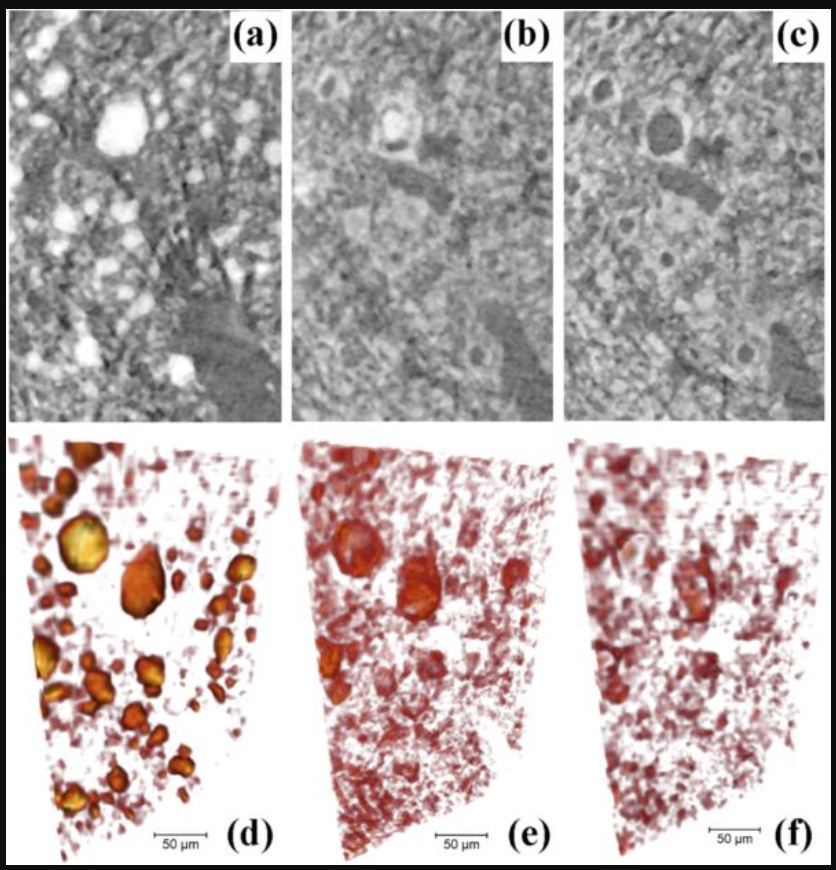
Flexibility and sustainability
In addition to improving sustainability, conductive plastics support greater flexibility in connector designs. For applications like automotive systems, conductive plastics can provide environmental stability, recyclability, weight savings, and high mechanical performance. Conductive plastics can also support the small form factors and complex geometries needed for connectors in data processing and communication applications.
Different plastics can be used to support specific cost-performance requirements, and the concentration of the metal fillers can be fine-tuned to provide the needed level of shielding. Using conventional plastics requires the addition of a metal shield using deposition, plating, stamping, or other fabrication options that add complexity and cost.
How good are conductive plastic emi shields?
Conductive plastic EMI shielding can provide performance levels comparable to metal shielding if the right plastic is used. For example, the insertion loss and crosstalk performance of two conductive plastics were compared with metal components. The plastic housings demonstrated nearly identical performance to the metal part (Figure 2).
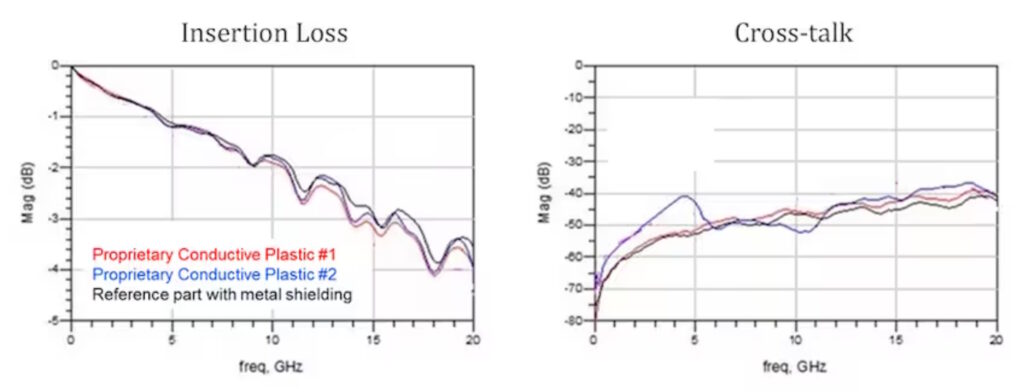
Summary
Conductive plastics contribute to sustainability since they require less energy to produce, and they result in lighter-weight shielding compared with metal-based shielding options. By fine-tuning the density of the dispersed metal particles in the plastic and controlling the annealing process, EMI shielding performance can be controlled. It can be comparable to the shielding provided by pure metal-based designs.
References
Building Lighter, Less Expensive Products with Conductive Plastics, TE Connectivity
Contacts for Electrically Conductive Polymer Composites, Fraunhofer
Exploring the Realm of Electrically Conductive Plastics, Jamcor
Insights on Conductive Plastics, Modern Dispesions
TE Connectivity Uses ALS to Improve Conductive Plastics, Berkeley Lab

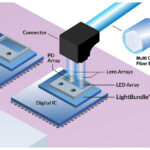

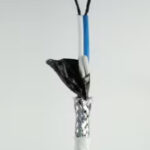

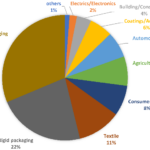
Leave a Reply
You must be logged in to post a comment.